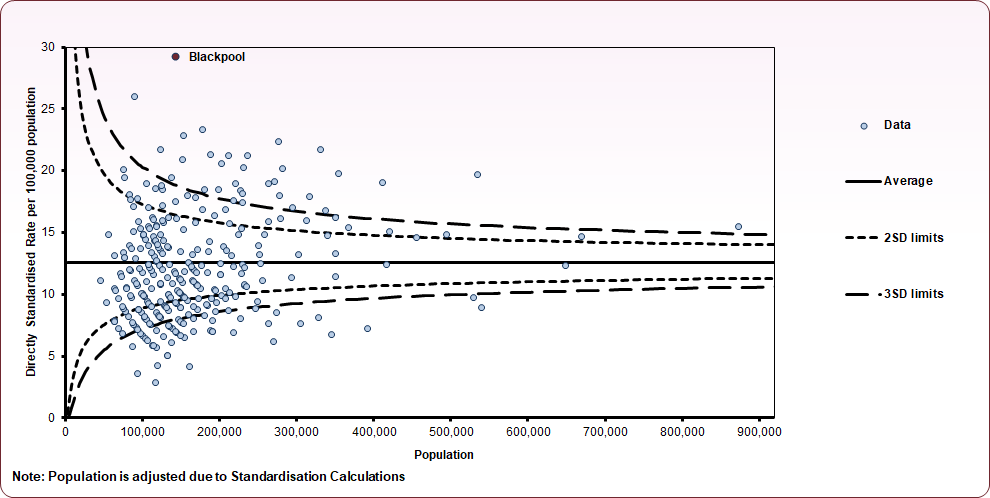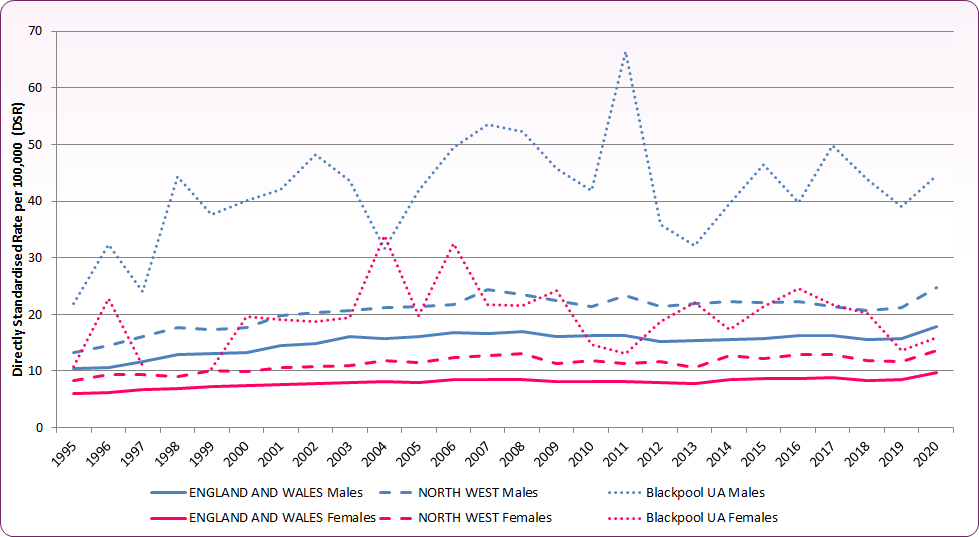Chronic Liver Disease
Last Modified 26/01/2024 14:25:47
Share this page
Introduction
The causes of chronic liver disease cover a wide range of congenital or acquired abnormalities, although alcohol abuse remains the predominant cause of chronic liver disease in the Western world.
Facts and figures
The directly standardised mortality rate (in this case per 100,000 population) is calculated to allow comparison between geographies of different population sizes and with different gender and age make ups. As displayed in Figure 1, Blackpool's directly standardised rate (DSR) of mortality from chronic liver disease is the highest in the country when compared to other local authorities and more than twice that of England and Wales. Please note, the three-year (2018-2020) mortality funnel chart and the annual trend chart below cannot be updated to incorporate more recent data at present. This is due to the revised official population estimates (based on the Census 2021) not being available to recreate the mortality trends. Once these are published, the charts will be updated.
Figure 1 - mortality from chronic liver disease including cirrhosis 2018-20 (all ages) - lower tier local authority
 Source: NHS Digital, Compendium: Mortality, 2022
Source: NHS Digital, Compendium: Mortality, 2022
Figure 2 shows the trend in mortality from chronic liver disease, comparing Blackpool to the North West and England and Wales. Nationally and in the North West there has been an increase in mortality from chronic liver disease, but this increase has been particularly marked in Blackpool, especially amongst males.
Figure 2 - trend in chronic liver disease including cirrhosis mortality (all ages) 1995-2020
 Source: NHS Digital, Compendium: Mortality, 2021
Source: NHS Digital, Compendium: Mortality, 2021
Risk factors
There are a variety of risk factors and diseases that cause chronic liver disease. The three commonest risk factors for chronic liver disease are excessive alcohol consumption; blood borne viruses, in particular hepatitis B and C; and obesity. An individual with more than one risk factor (e.g. hepatitis C/obesity as well as excess alcohol consumption) can further increase their risk of chronic liver disease.1
[1] http://www.scotpho.org.uk/health-wellbeing-and-disease/chronic-liver-disease/risk-factors